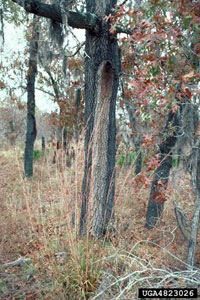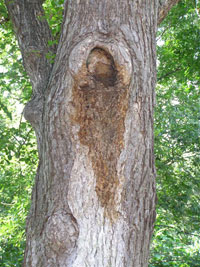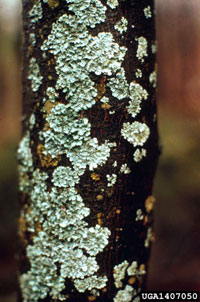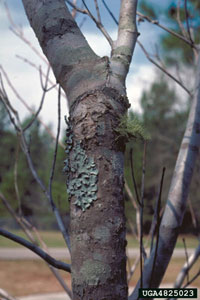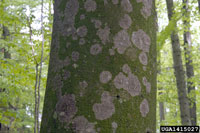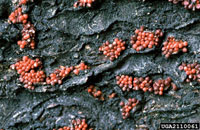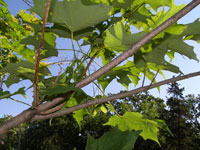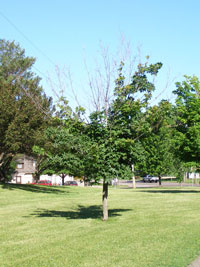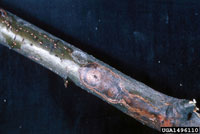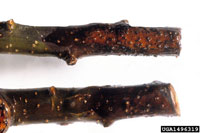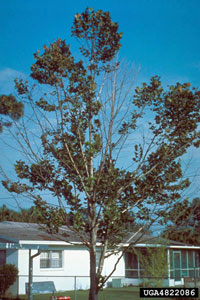Extension > Garden > Diagnose a problem > What's wrong with my plant? > Deciduous Trees > Hackberry > Discolored areas on branches/trunk
Hackberry > Branches/Trunk > Discolored areas on branches/trunk
1 of 4
Wetwood or bacterial slime flux
Several species of bacteria
- Streaks or columns of water-soaked discoloration of bark on the trunk or branches that is gray to yellow-brown when dry and black to brown when wet
- Discoloration commonly starts at bark cracks, wounds, or branch unions
- Fluid may ooze or bleed out of openings in the bark and may have a yeast-like odor
- Avoid wounding the tree
- Protect the tree from other stresses, especially soil compaction from vehicles or pedestrians
- More information on wetwood
2 of 4
Lichens
Several species
- Colorful patches on the bark of trunk and/or branches
- Can be wrinkled, in scalloped sheets, lace-like pads, bushy tufts, paint-like spots or splashes
- Forms can be flat against the bark surface or raised in leaf-like lobes, finger-like or hairy projections
- Colors may be shades of gray, green, blue, yellow, orange, or red
- Lichens do not harm trees or shrubs and no management is necessary
- More information on Lichens
3 of 4
Coral spot canker
Nectria cinnabarina
- Sunken dark brown area on branch that is often cracked or has a ridge at the edge
- Raised cushion-like bumps on affected branches, may be cream to orange or red, turn black with age
- Dead branches and twigs, often first observed in early spring when no leaves form
- Or, wilting soon after leaves emerge in spring
- Common on trees stressed by drought, recent transplant or
other factors - More information on canker
4 of 4
Branch cankers
Botryosphaeria stevensii or Botryosphaeria spp.
- Cankers are brown to black sunken areas on branch that may have cracked bark and discolored sapwood
- Scattered dead branches seen throughout canopy
- Leaves on random branches wilt, turn yellow then brown during the growing season
- Infected branches don't leaf out in spring
- Common on trees stressed by drought, winter injury, wounds, insect feeding or other factors
- More information on cankers



